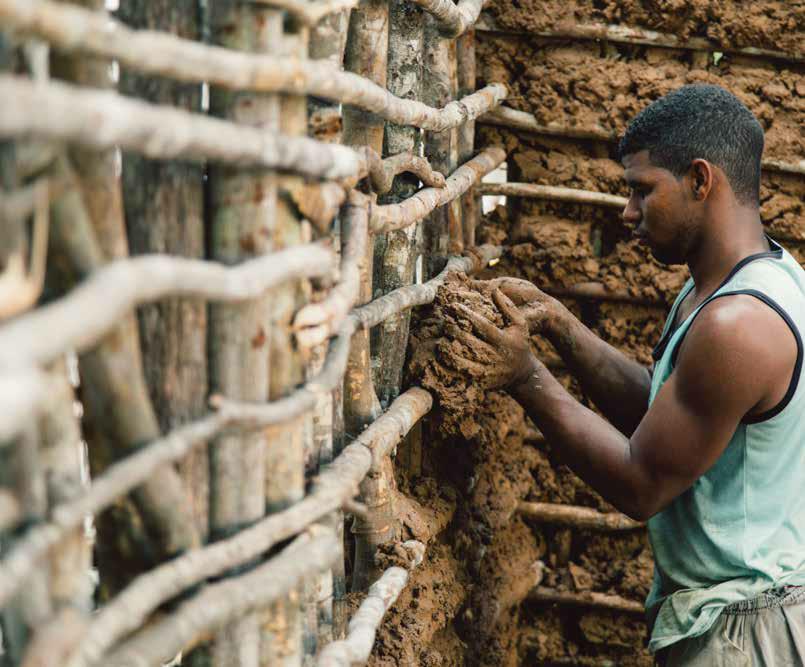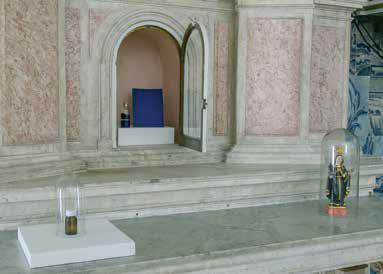Invest Week Interview #18 Marcelo Rezende
Writer, curator, director and editor; Marcelo Rezende (1968) is a Jack of all trades when it comes to art.

He was the director of the Bahia Museum of Modern Art (MAM-BA) from 2012 to 2015; chief curator of the 3rd Bahia Biennale in 2014; writer of the novel Arno Schmidt and editor of Contorno, an art magazine. Recently, he gave a lecture at the Dutch Art Institute in Arnhem called Failure to Transmit. But with things in turmoil in Brazil, so is his own position. Rezende will be a special guest at the Lina Bo Bardi Fan Day (2 July at Stroom).
First of all: how are you doing in turbulent Brasil at the moment? How does the political crisis affect the region of Bahia and Brazilian art in general?
‘Everything has been touched by the political backlash… The fight is still going on, but the picture is very clear: Brazil is facing a putsch, a coup d’état by the Right and Far-Right forces in the country. And, as usual in cases like this, the Left has been unable to be… well, a real Left!
‘I was ‘invited’ to leave the Museum of Modern Art in Bahia (MAM-BA) in late December, due to the atmosphere – my tenure as the director was described as a ‘political menace’ by the new administration in Bahia. Why? Because we decided in the last four years to put up for debate the hierarchy between the museum, the audience and the Estate. MAM-BA is a public museum, you see.

‘It’s a bit like being trapped in a Latin American political movie from the 70s. A B-production at its best. As a consequence there will be no Bahia Biennale in 2016. The Bahia Biennale has found its end in the second edition, in 1968. Incidentally for the same reasons, a putsch. It took 46 years to bring it back. It was the same with Lina Bo and the MAM-BA, four years before, in 1964.’
Seems like history is repeating itself.
‘It seems we are in another historical maze, where the idea of historical return, la répétition, is taking place. We can try to search for the meaning of it all among the usual suspects: Carl Jung (the universal unconscious), Karl Marx (the return as a farce), post-neo-colonialism, Walter Benjamin (theses on history) or the Brazilian economist Celso Furtado (what does it mean to be ‘developed’?).
‘But the new historical moment is still asking for a better explanation. A superior understanding of Brazilian culture as such, even among the Brazilians…’
What’s the position of the art scene in Bahia in Brazil?
‘As you know, Brazil is a big country… Only Rio de Janeiro and São Paulo can be seen as places playing by the international rules. Art markets, art fairs, art galleries, collectors, art schools, Biennale and so on.

‘But the power, the filter, is the economy. Only São Paulo city (Rio not that much…) has the money and structure to do it. Most of the time, when you are looking at Brazilian artists, exhibitions, curatorial research, you are looking at what has already been filtered by São Paulo.
‘Bahia is a good example. Brazil, as a ‘new place’ in the western narrative during the 16th century, started when the Portuguese arrived for the first time on the Bahian coast. Under the Portuguese colonial administration, the violence, the war between indigenous people and the Europeans, the slavery trade and all the racial (and sexual) tensions began. During the colonial administration Salvador of Bahia was the first Brazilian capital. Yes, a lot, a lot of historical layers…
‘But during the 20th century, Bahia was labelled as ‘underdeveloped’, still very, very far from any ideal of a ‘civilized’ society. The political and economic powers in the country painted the Northeast region like this. If you take the western point of view, Bahia is a failure, because it has been incapable of dealing with the western expectation…’
And the Bahia Biennale?
‘That is not even a footnote in Brazilian art history. We know nothing. No books, no essays, no local or international research.
‘At most, Bahia has been pictured as a cheerful and exotic place. Carmen Miranda, the Brazilian Hollywood star in the 40s, made a career playing a baiana (woman from Bahia): the clothes and the tutti-frutti hat. So, Bahia was understood as a cultural power by only a happy few, full of new possibilities, and the local university had a special role to play as well.
‘In the 50s, the university became a haven for a new way of thinking. Lina Bo came, and so did the Swiss composer Walter Smetak, the German musician Hans J. Koellreuter, the Polish choreographer Yanka Rudzka. It was the Bahia Renascence. Followed by the Tropicália Movement, the Cinema Novo (new cinema) and Glauber Rocha.
‘The coup in 1964 put an end to all of this, and in 1968 (after further induration of the military dictatorship) arrived at its final chapter. It’s fantastic how Bahia has fed, with new meanings, everyone who came. A two-way street, indeed.’

After 1966 and 1968 there wasn’t a Biennale for decades. Until 2014, for which you were the chief curator. You explained you wished to continue the prior editions. How did you try to achieve this?
‘The main goal, as you can imagine, was to bring the layers and the undercurrent narrative into the light. However the question is how to avoid doing a lousy imitation of the past, disregarding the local context? The MAM-BA and the Biennale (the museum and its crew were in charge of the project) came from that.
‘The idea wasn’t to ‘reinvent’ the Biennale as such, but it was really another procedure: to work (at the museum and Biennale) with Bahia and its drama (and glory), not using Bahia to illustrate the subjects.
‘In Bahia, we don’t have a state of the art technology, but we still have the human experience on a daily basis. How can we learn from the experiences people already have? How could a museum and a Biennale learn something new again? Can we change our perceptions in such a way that they are affected by what we are receiving? In the end, there were 56 different exhibitions in 27 different cities in Bahia in 2014, and that was not the whole story.’

As stated by the curators ‘this is not a Biennale for artists, it is a Biennale for everyone.’
‘A Biennale is not made of exhibitions and conferences. At least it should not be so, or a Biennale (and the museum) would just become a showroom in the economic circulation of objects and cultural signs.
‘Regarding the 3rd Bahia Biennale, we asked the artists to help us find pragmatic answers to urgent questions. If we needed a staircase in a building from the 17th century, could we build it together, the curatorial team, the artist, the working force in place, everyone?
(Image: 3rd Bahia Biennale 2014, Imaginary Museum of the Northeast (with Yves Klein Blue) © Alfredo Mascarenhas)

‘Would we be able to listen to each other in cases like this, having a staircase as an artwork, a tool for everyone in the building, a solution to a problem, all at once? Could we establish a dynamic where everyone had an equal voice?
‘At the end of the day, everyone is an artist, and nobody is an ‘artist’. Curating, here, is not restricted to the exhibition venue, artists, art history and objects. It involves the process, the cultural narrative and its traps. You can curate an exhibition, or you can curate the institution as a whole…
‘Is this a Brazilian thing? Of course not (Pontus Hultén and Willem Sandberg, to mention only a few…). But Brazil has a major place in the (possible) curatorial history and its narrative. Lina Bo and Walter Zanini are good examples.’

What were your lessons from Bahia?
‘I am actually not from Bahia, I was born and raised in São Paulo, spending some years living in Europe (Paris)… I am a very typical professional from São Paulo… But Bahia gave me very strong, sometimes violent lessons about what curatorship or a museum could be or should be.
‘There is a Brazilian saying regarding the times to come: ‘As long there is bamboo, there will be arrows’. The bamboo is everywhere, but you need to find it, and for that we need a therapeutic eye.’
In aanloop naar de aanstaande Invest Week in juni presenteert Jegens & Tevens in samenwerking met Stroom Den Haag een reeks persoonlijke portretten. Meer informatie over de Invest Week is te vinden via www.stroom.nl.